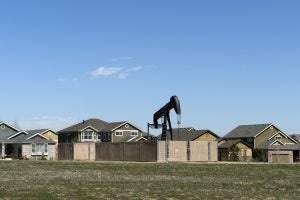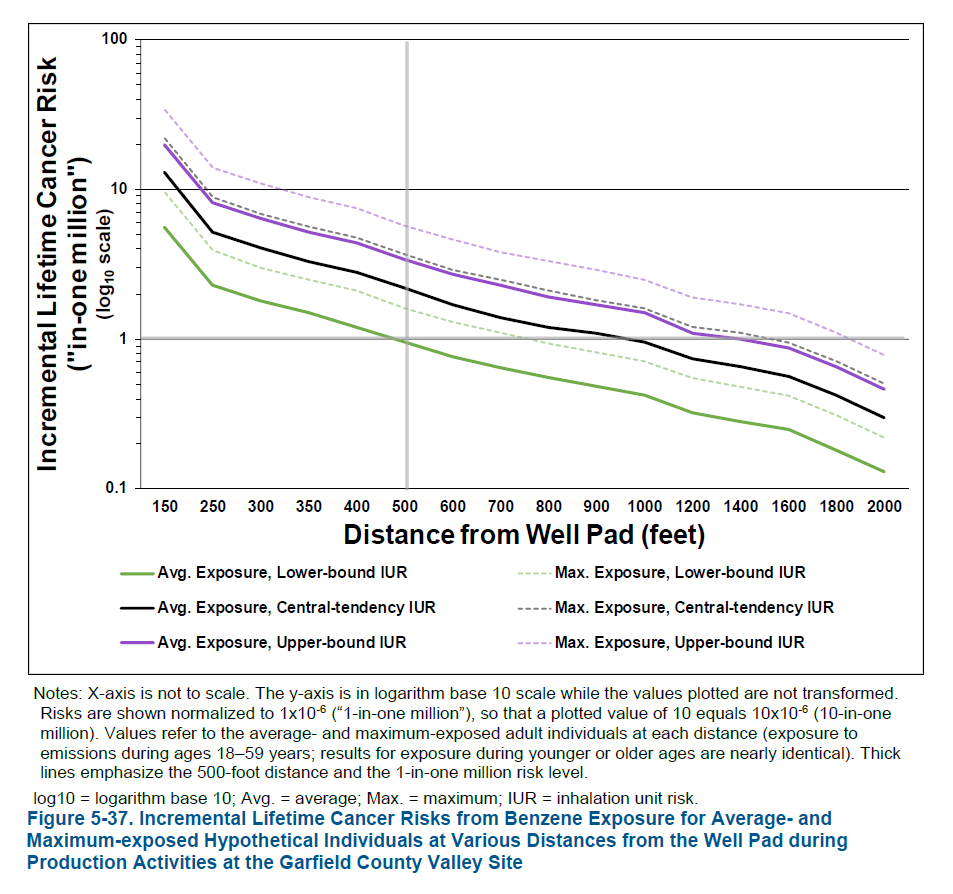 By Ananya Roy and Tammy Thompson
By Ananya Roy and Tammy Thompson
As production of oil and gas in the United States has expanded, it’s no longer uncommon to see rigs and well pads nestled in communities. For example, Weld County in Colorado ranked fourth in the nation for population growth in 2017, and has issued thousands of new permits for oil and gas extraction in the past few years. Emissions from the intensive energy development sprouting along highways, in fields and within sight of homes, playgrounds and school yards has led to concerns about rising pollution from this industry and the subsequent health risks.
Communities are concerned about all of the emissions from these operations but focus on the brew of volatile organic compounds that include benzene, toluene and ethyl benzene, since some are known carcinogens or have established impacts on the brain, lungs and blood. VOC emissions, however, vary considerably between different processes. Well sites and changing weather conditions either spread or concentrate the pollution over different distances and directions, suggesting that intermittent measurement campaigns are inadequate to capture population exposures and risks.
That’s why the Colorado Department of Public Health and Environment collaborated with ICF, a consulting firm, to conduct a state of the art air pollution modelling based Quantitative Human Health Risk Assessment which they released last month.
The study estimated exposures from specific oil and gas activities including drilling, fracking, flowback and production, over different time durations (acute/worst case-scenario exposure, multi-day exposure, and long-term chronic exposure over years), from different sized well pads (one, three and five acres), and different basins in the state. Calculated population exposures were compared against established health-based guideline concentrations (considered safe) at increasing distances from the well pad.
New study finds elevated health risks due to pollution from oil and gas activity in Colorado Share on XThe study found both elevated cancer and non-cancer health risks
The study found elevated lifetime cancer risk:
• Benzene exposures from production emissions alone, and all activities combined (drilling, fracking, flowback and production), were associated with an increased lifetime risk (above one in a million) of leukemia for the average individual at 500 ft.
• Risks in the most exposed populations (people who live downwind and spend more time outdoors) only dropped below the one-in-a-million risk threshold after a distance of 2000 ft.
The study also found non-cancer health risks, including the following:
• Benzene and 2-ethyltoluene emissions resulted in maximal one hour (acute) exposures higher than considered safe for most simulated populations 500ft away.
• Exposures of benzene were more than 10 times higher than considered safe for this acute exposure and are a risk for blood disorders. Blood disorders could result in anemia, disturbances in clotting or the ability to fight infections, and could manifest as fatigue, nose bleeds or infections.
• The study also found the potential for neurotoxic effects, such as headaches, blurred vision and dizziness, from combined acute exposures of benzene and 2-ethyltoluene.
• Risks were seen with acute exposure in every age group assessed.
• Exposures and risks during the flowback stage were found to be higher than those from other drilling and fracking activities. Specifically, long term exposure to multiple VOCs (n-nonane, benzene, m+p-xylene, and trimethylbenzenes) during prolonged flowback activities in large well sites resulted in elevated risks for neurotoxicity and blood disorders.
Study used well known modeling to determine results
This study used previously measured Colorado data to drive the AERMOD air dispersion model to estimate pollutant concentrations for thousands of potential combinations of weather and emissions conditions. The AERMOD model is well-known in atmospheric modeling communities and is used by the Environmental Protection Agency for regulatory decisions around air quality.
There are key ways this study may be conservative, suggesting areas for further research
1. The AERMOD model only looked at pollution dispersion from a single well pad.
This study does not account for the fact that of the roughly 240,000 Coloradoans living within 2000 ft of an oil and gas well pad, almost two-thirds of them actually live within 2000 ft of two or more well pads. Concentration of these types of air pollutant are additive, meaning if a location is downwind of multiple well pad sites, you should add the concentrations modeled from each well at a given distance together.
2. The model does not account for days when air movement or lack thereof exacerbates poor air quality
Colorado has days when either the wind isn’t blowing, or air is recirculated, leading to accumulating emissions. Especially in areas with multiple well sites, these conditions are likely to be worst case scenarios for exposure to oil and gas pollution.
3. Estimates of lifetime risk poorly addresses exposures and vulnerability among children.
The study does not adequately assess the exposure associated risk for young children (six and under). The authors assume similar activity and exposure patterns for children as adults, failing to account for higher breathing rates and the duration of time spent playing outdoors. Children are also more vulnerable to pollution because they are still growing and their bodies’ defenses are not well developed.
Overall, this study provides a thoughtful and fairly comprehensive analysis using best-in-class modeling methods for risk assessment to evaluate hypothetical emissions across many combinations of exposure. In doing so, it found that not all exposures may lead to risks above health-based guidelines, but there are many scenarios which are likely to lead to very concerning health outcomes. That, along with key areas where the study may prove to be conservative, suggests these health risks should not be dismissed, and that more serious attention needs to be focused on controlling emissions from the oil and gas industry.
Kate Roberts also contributed to this post.










